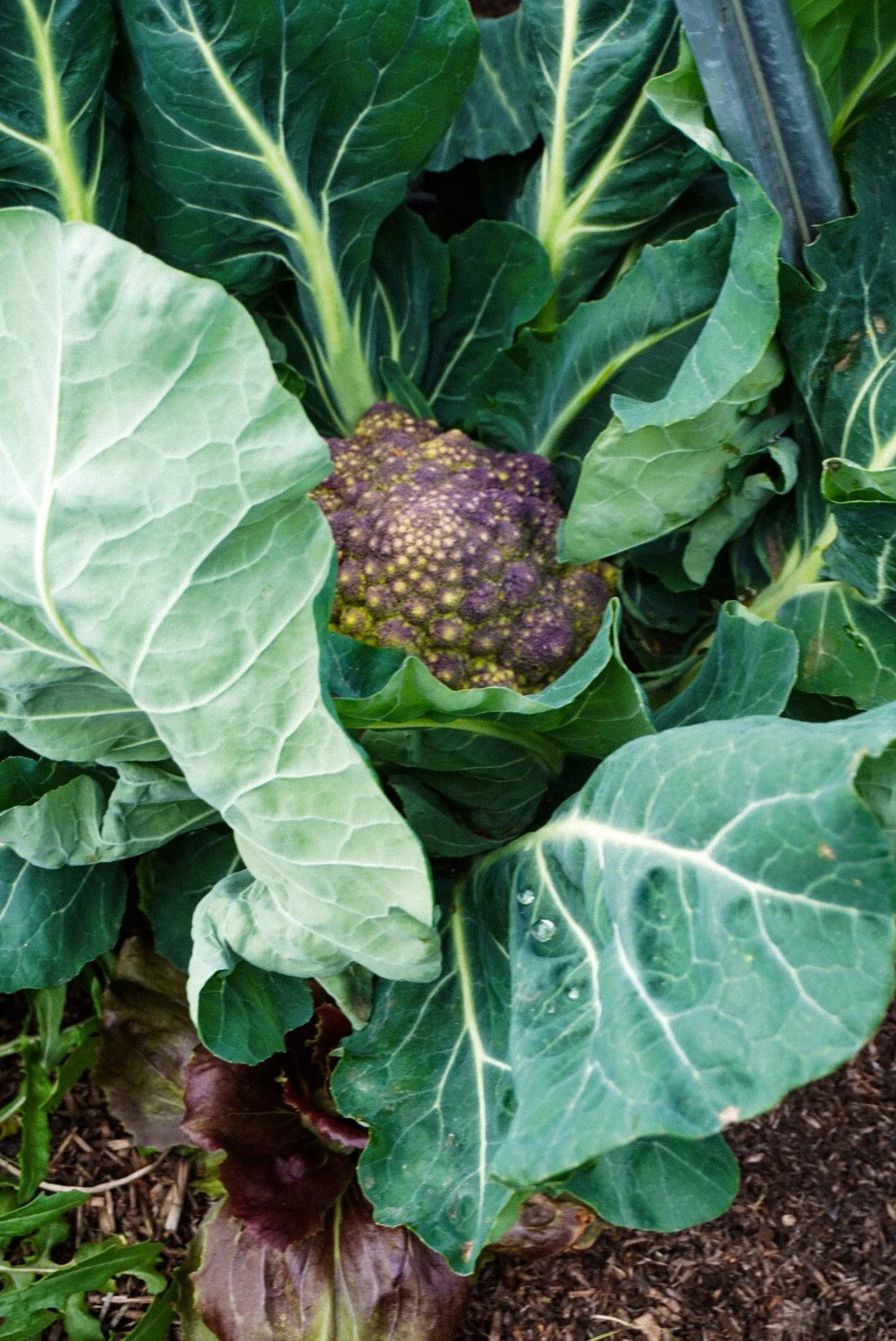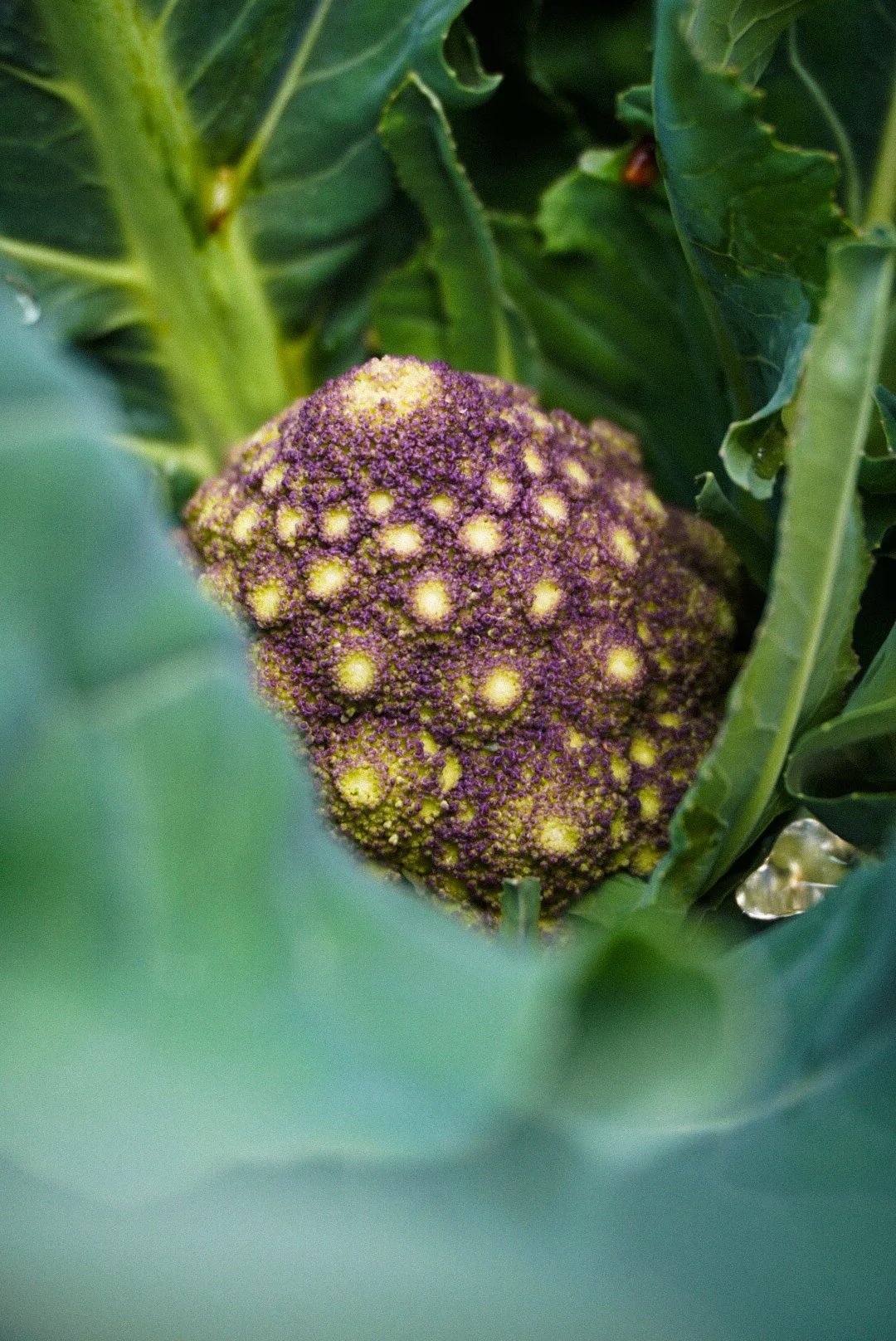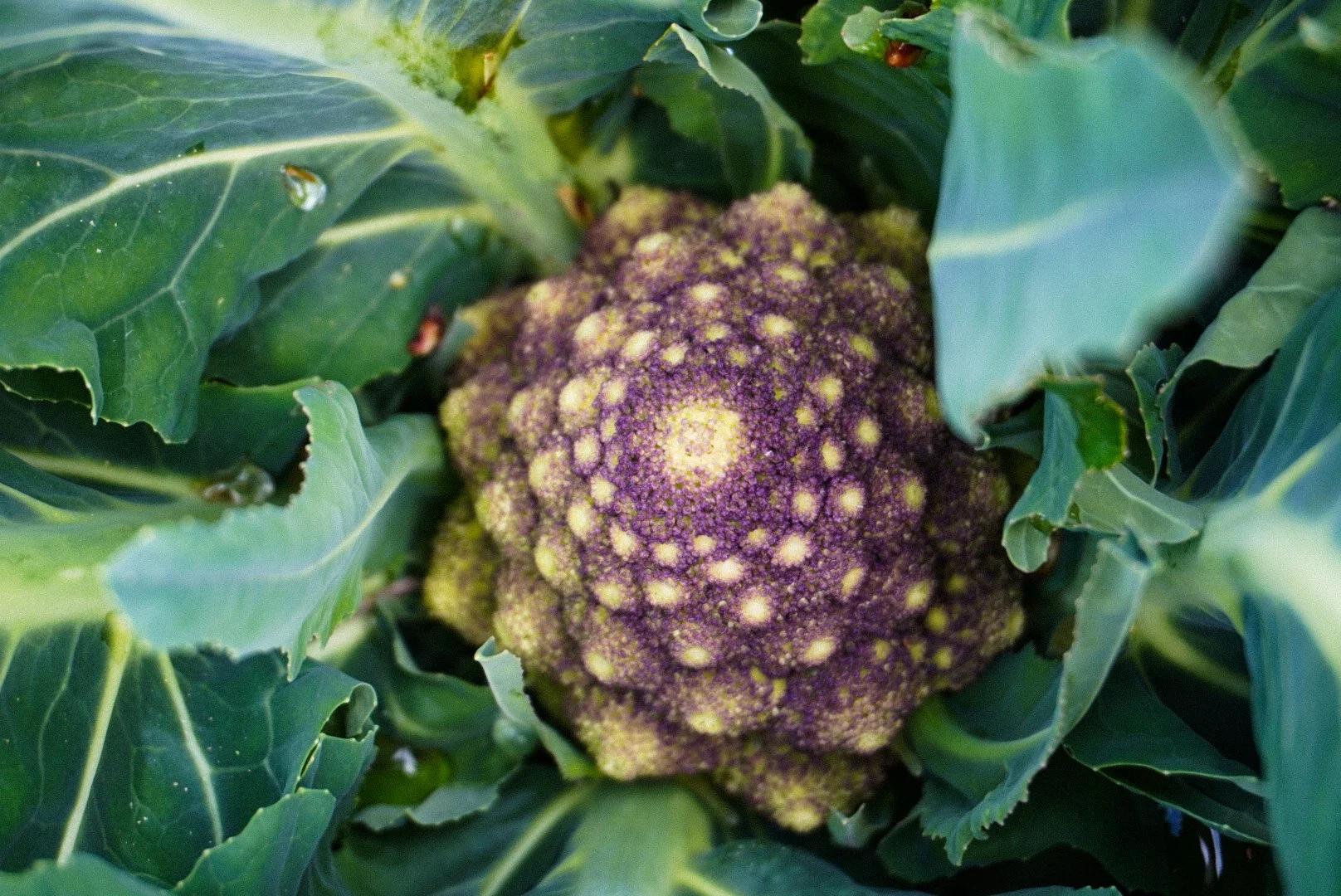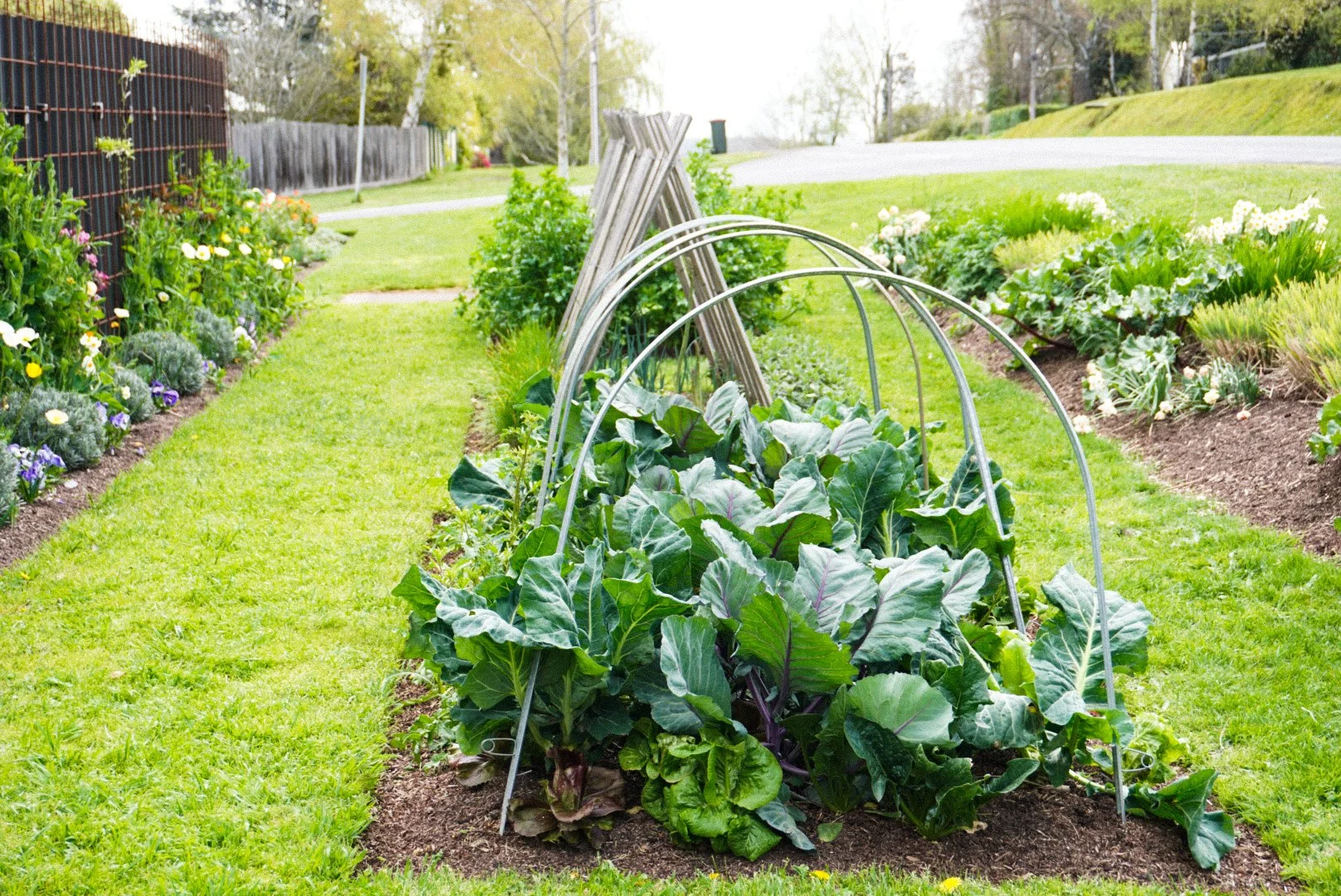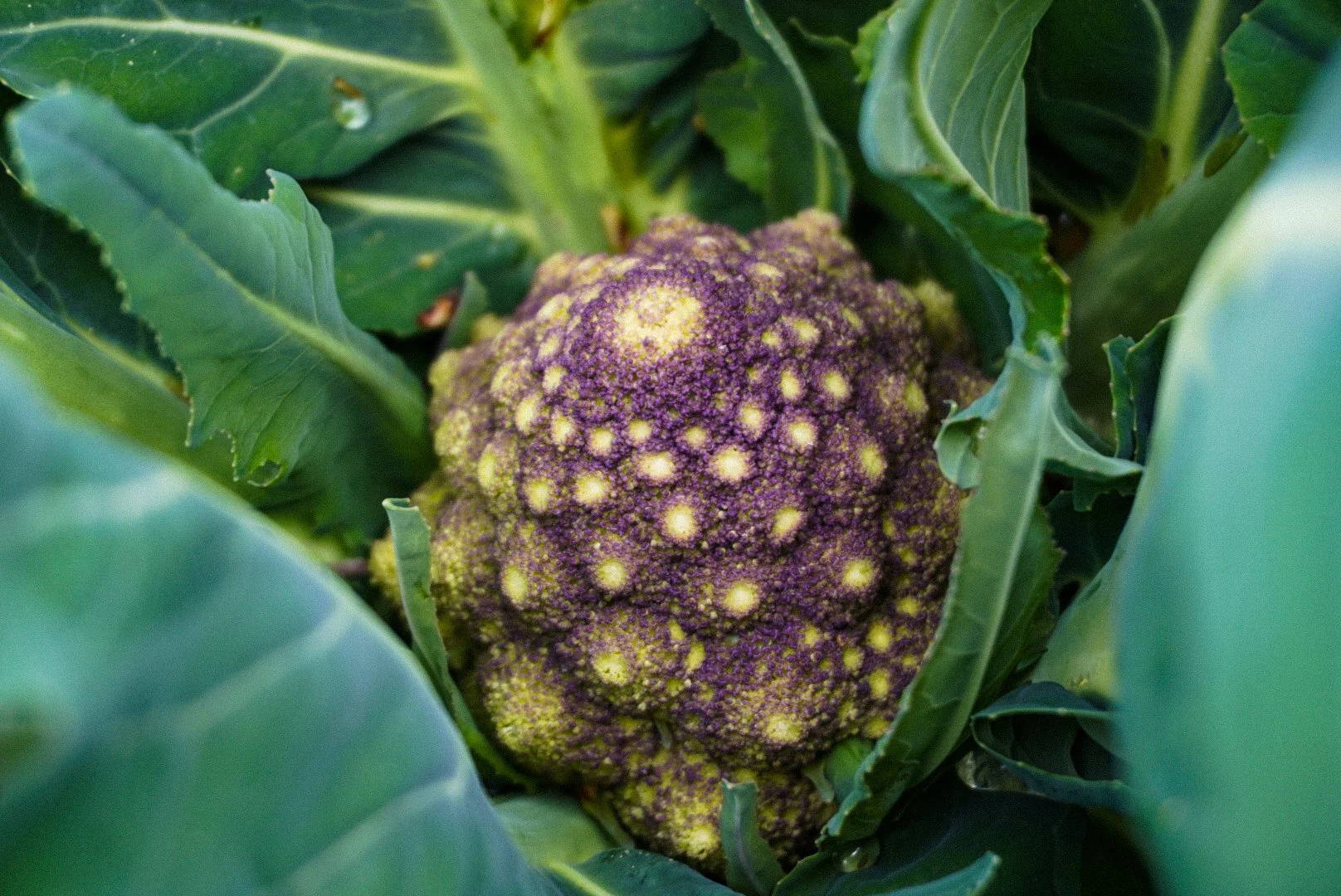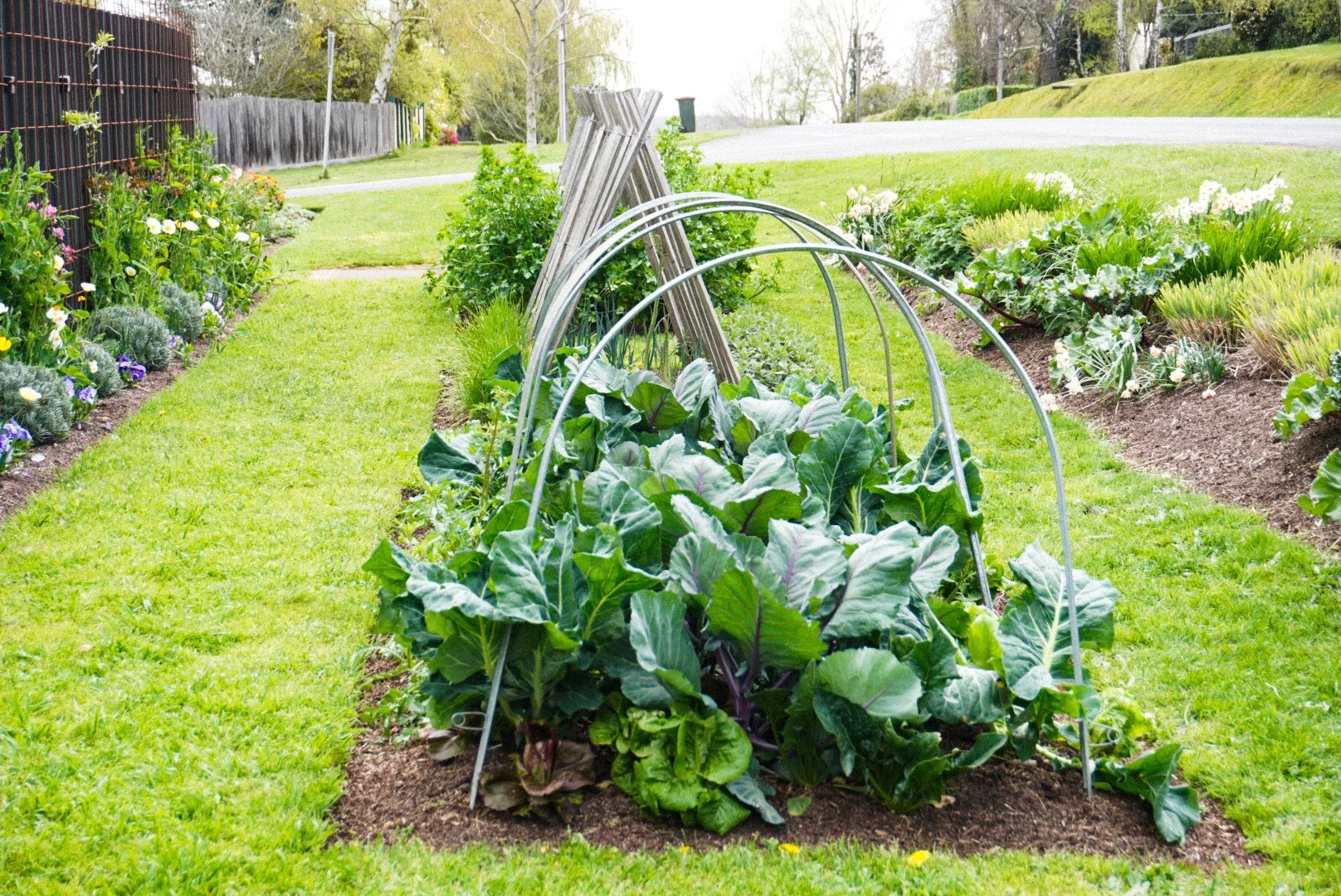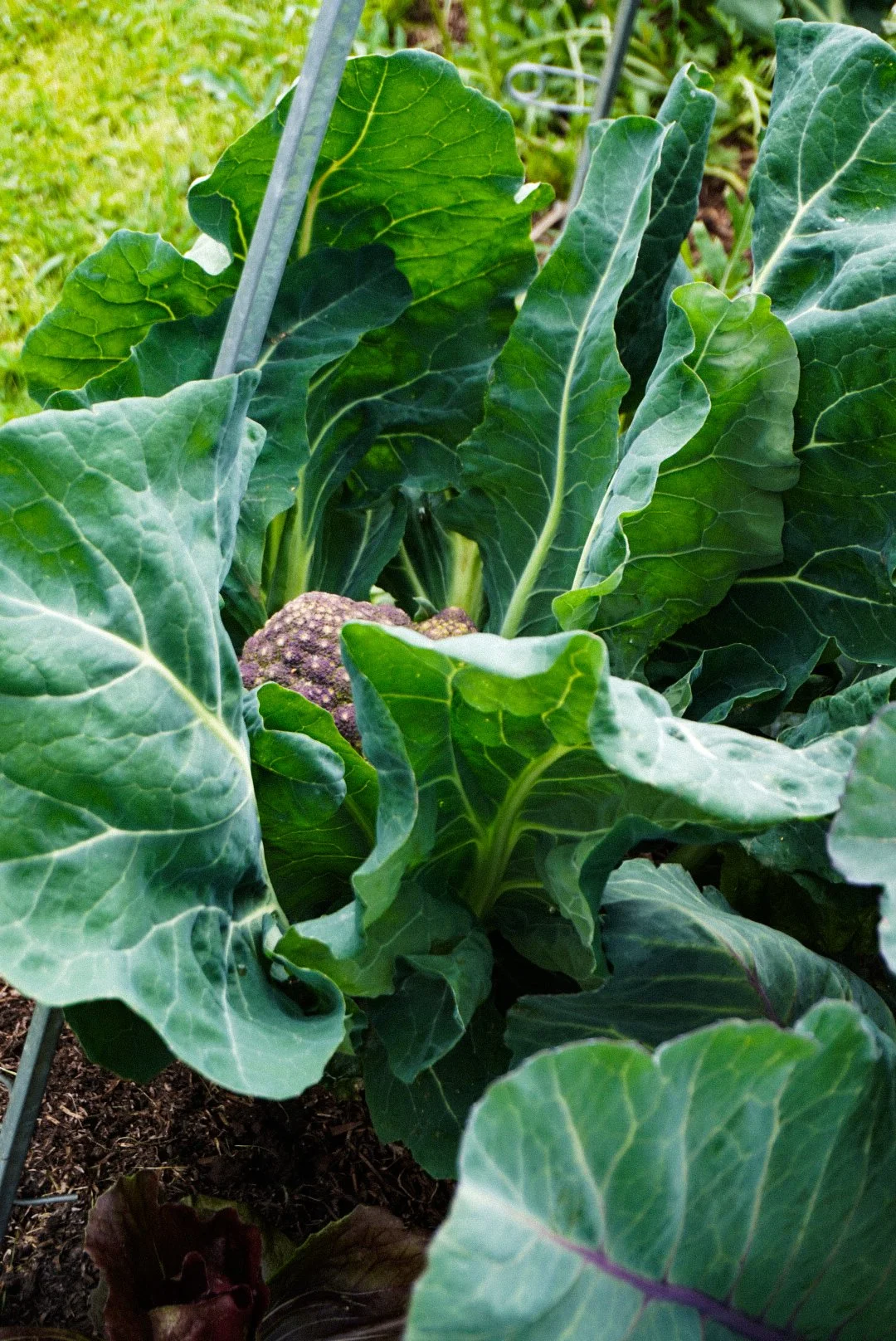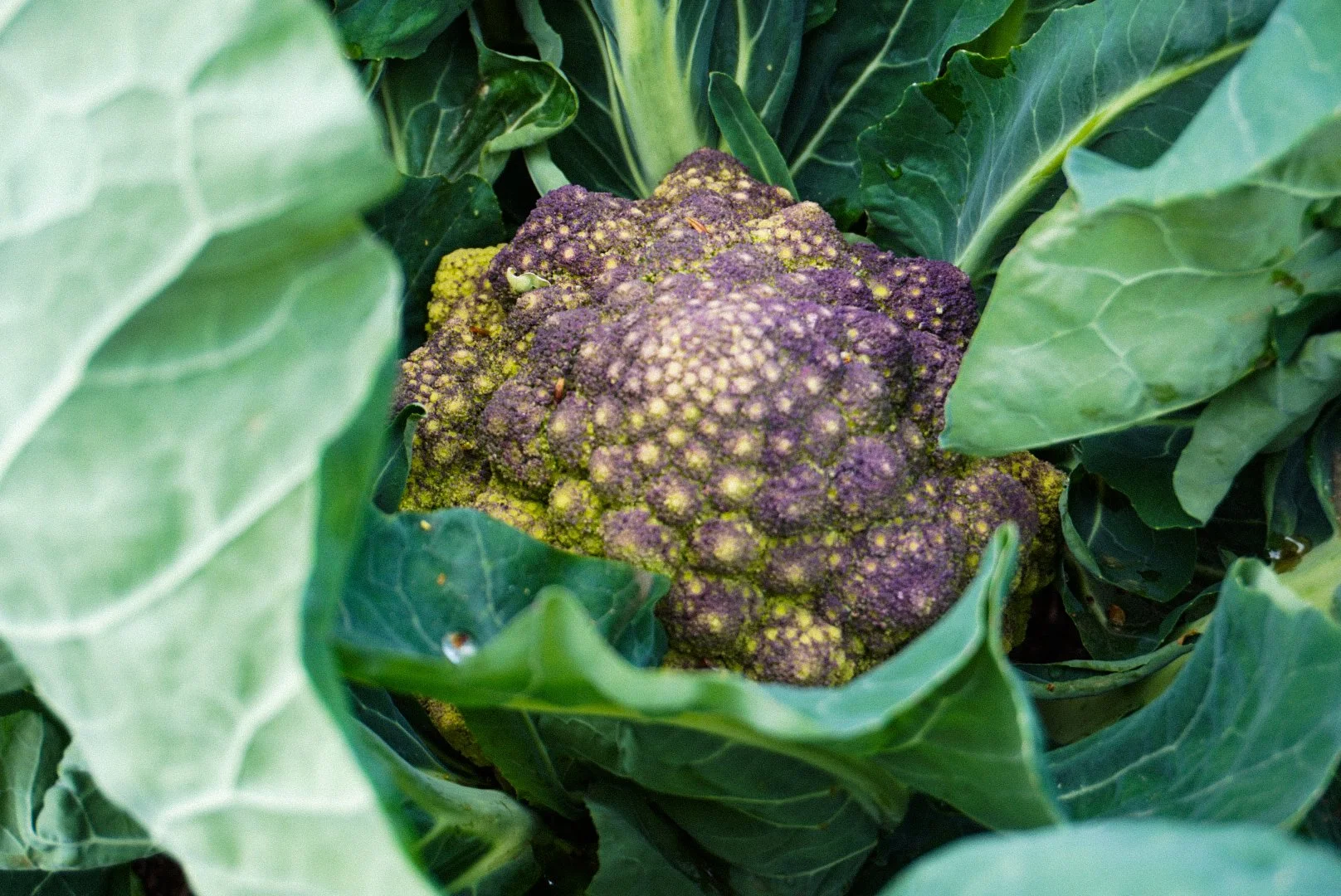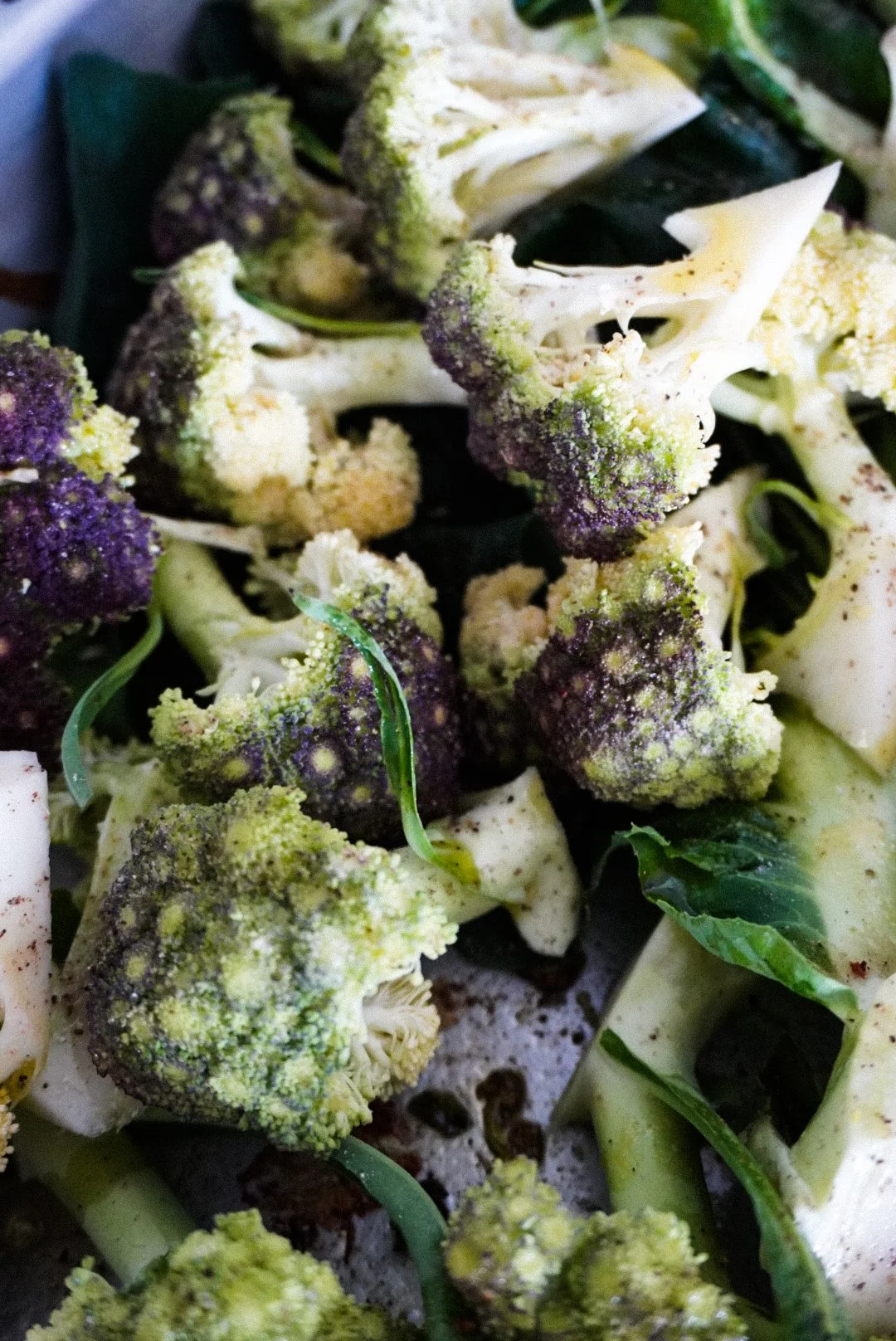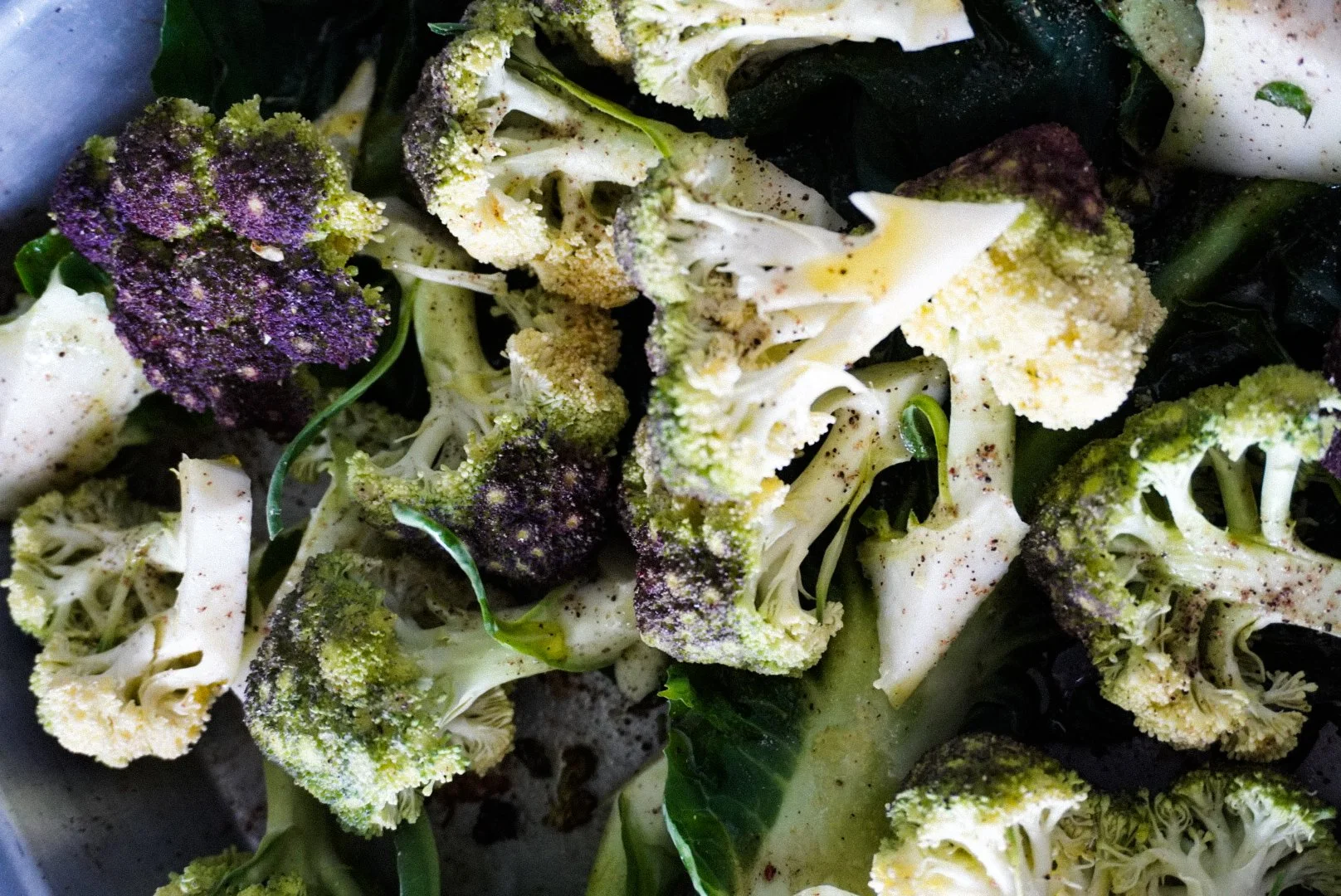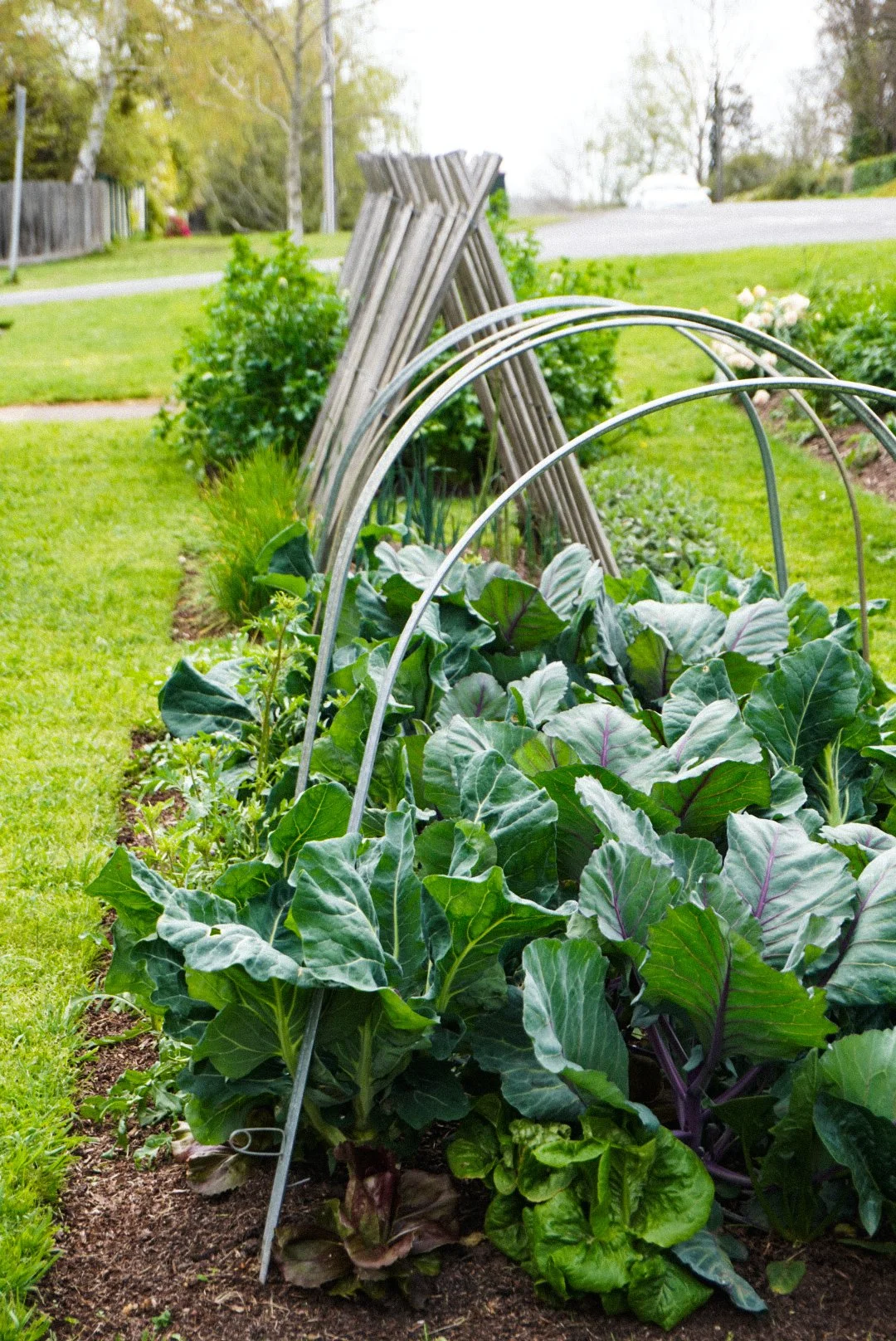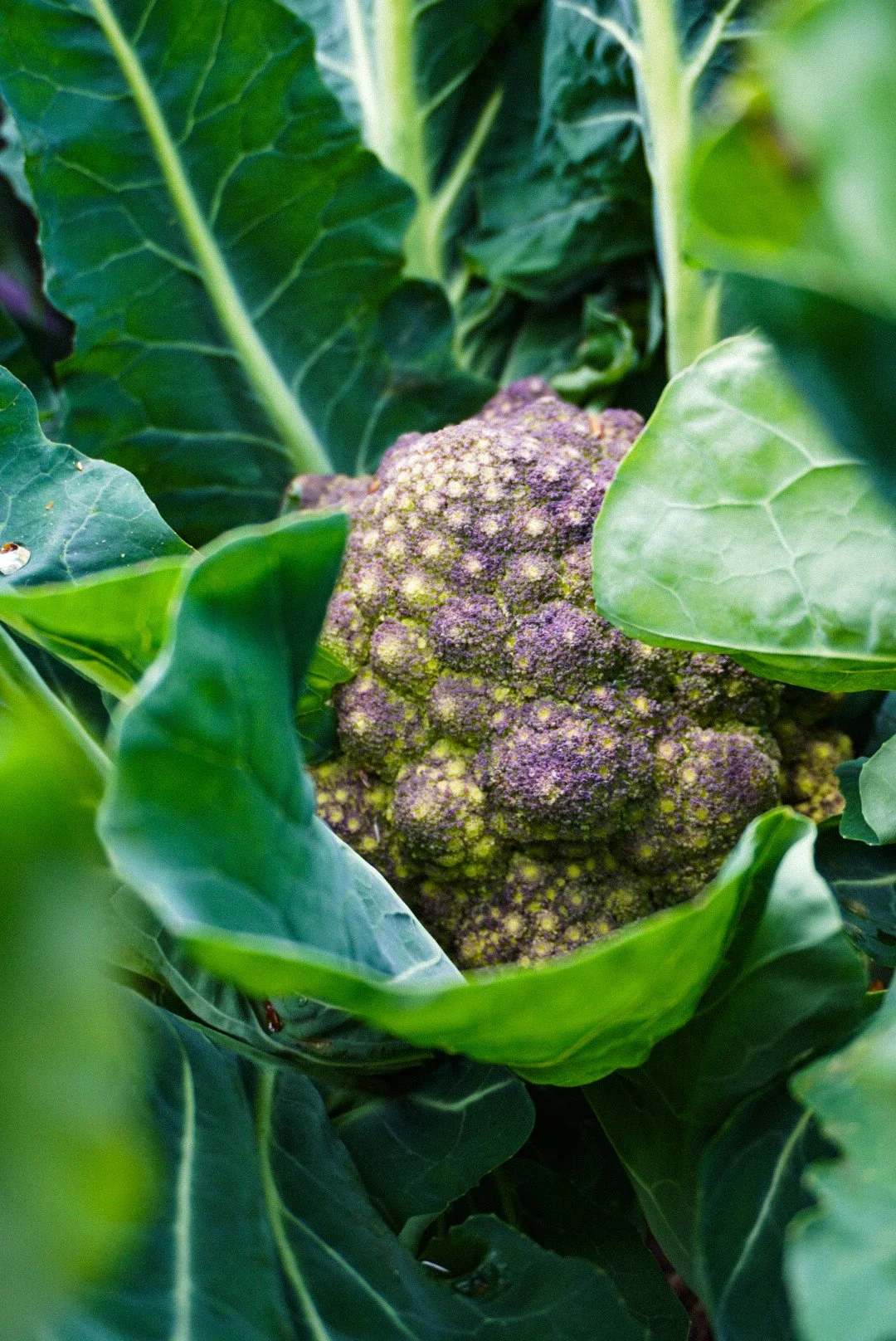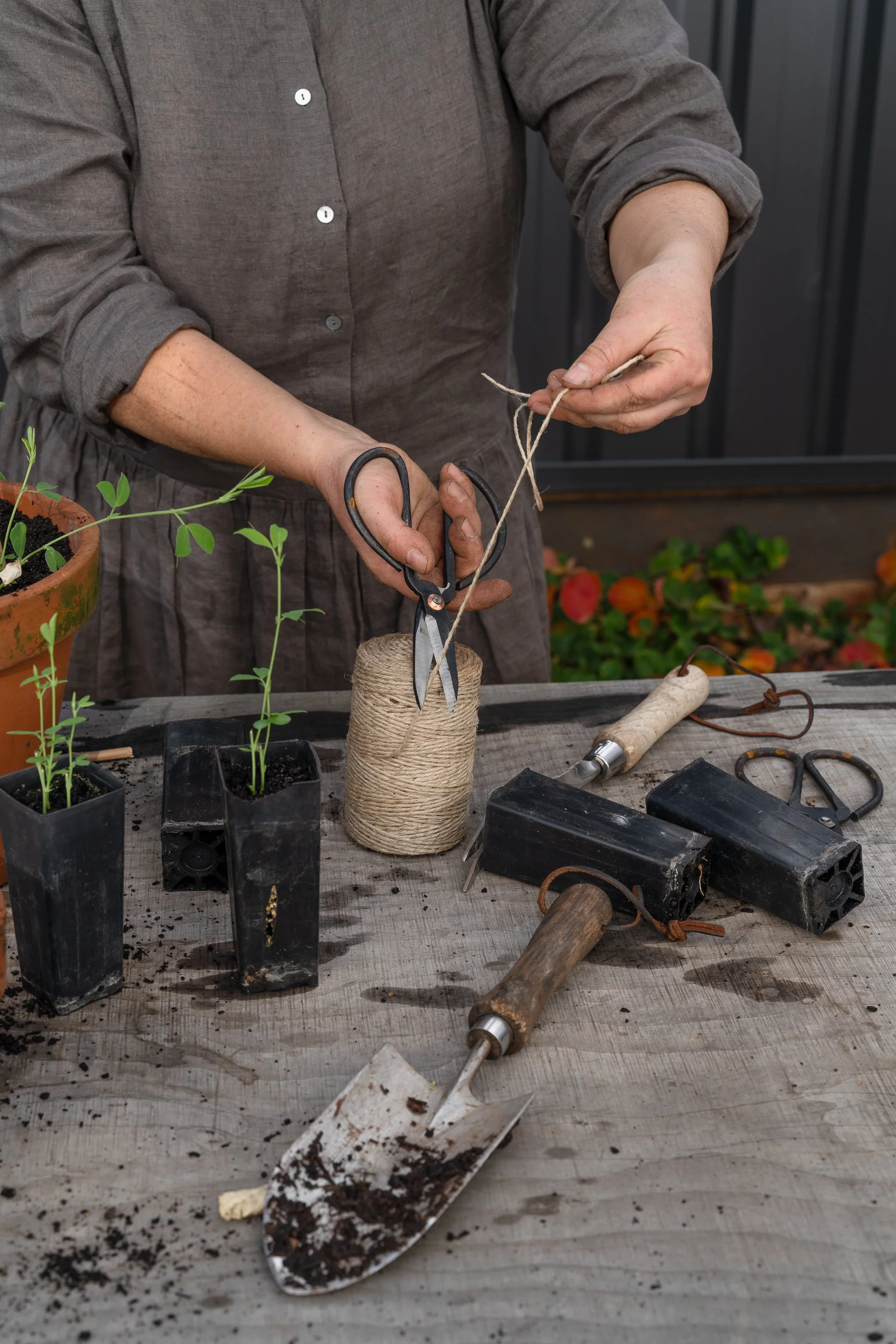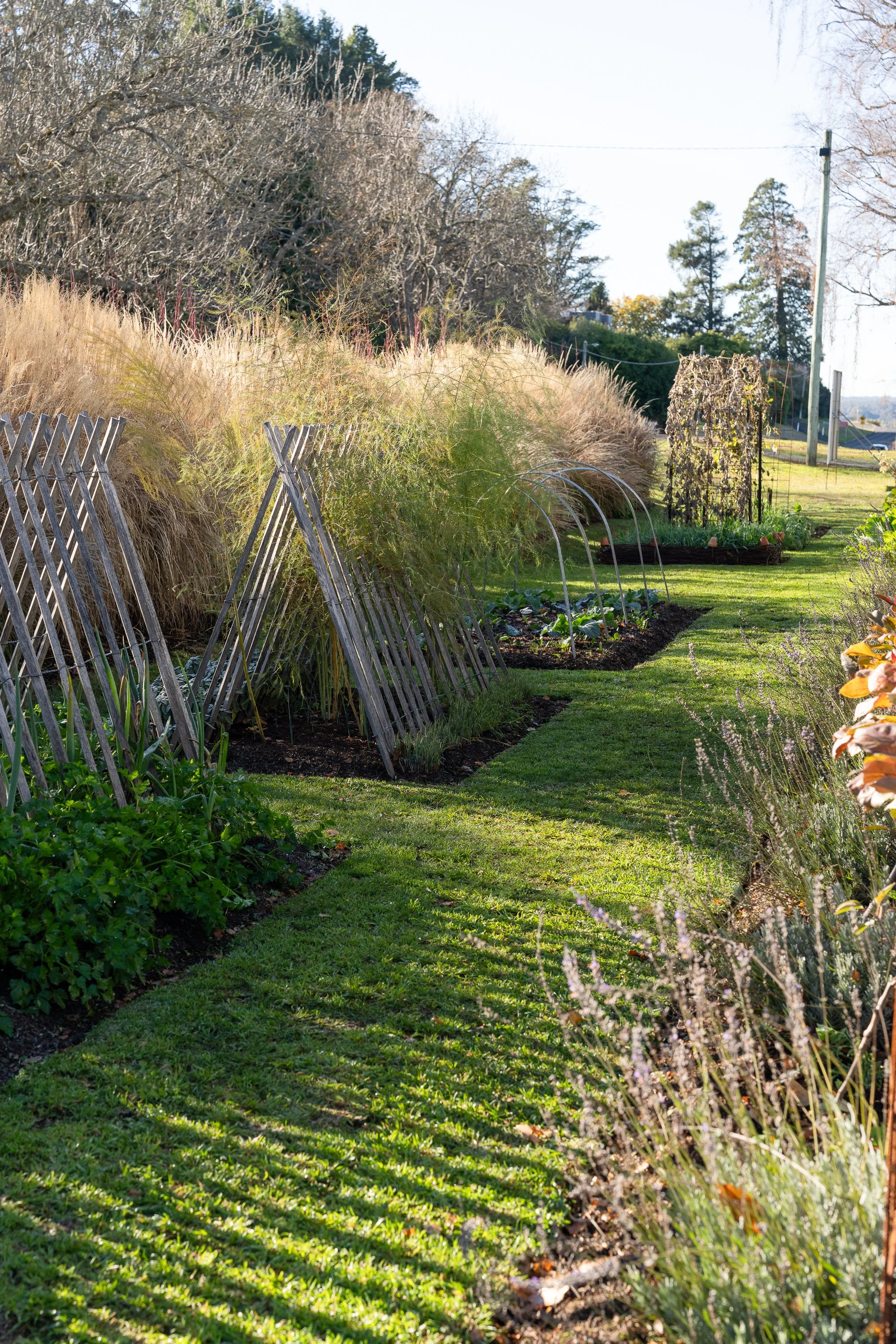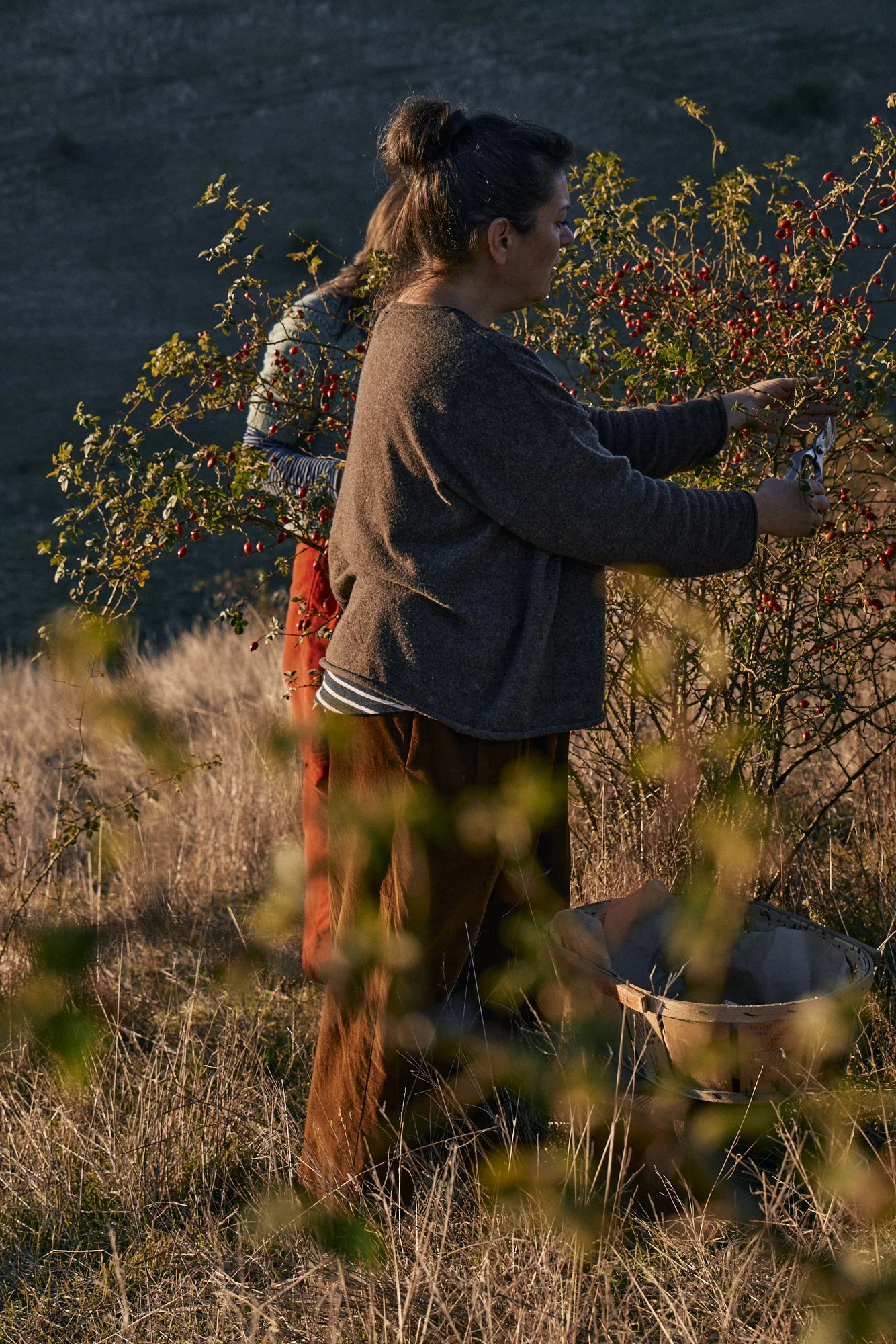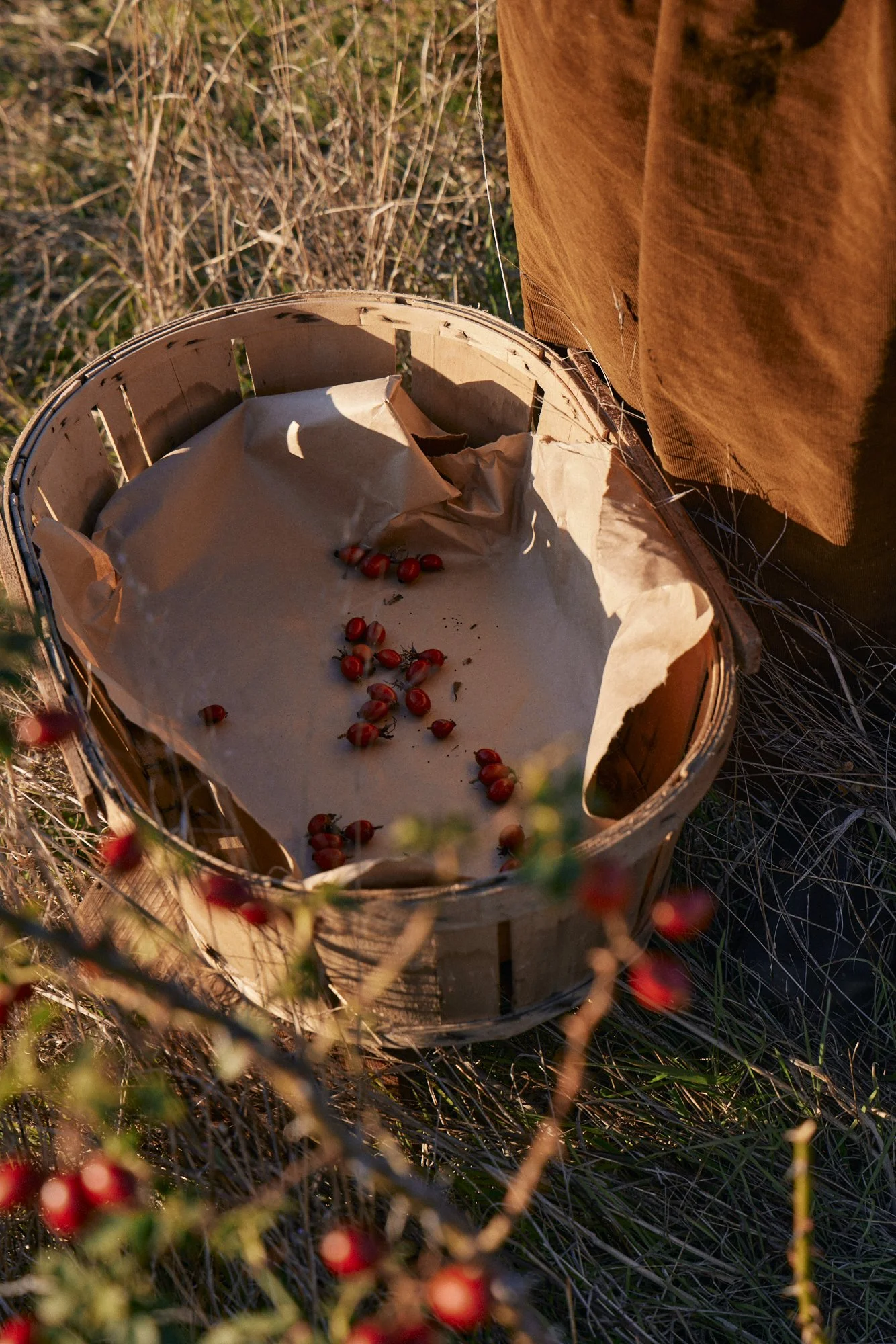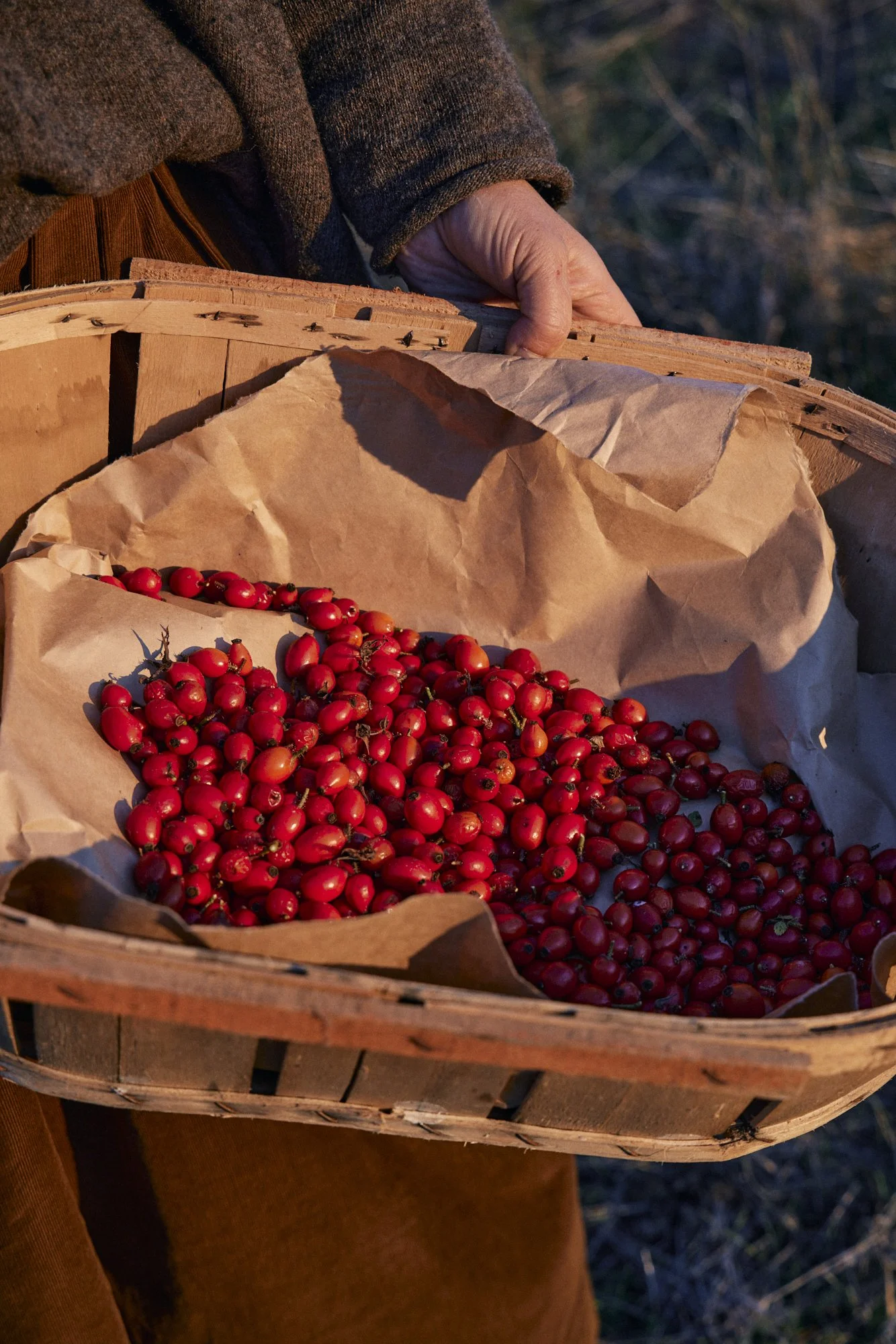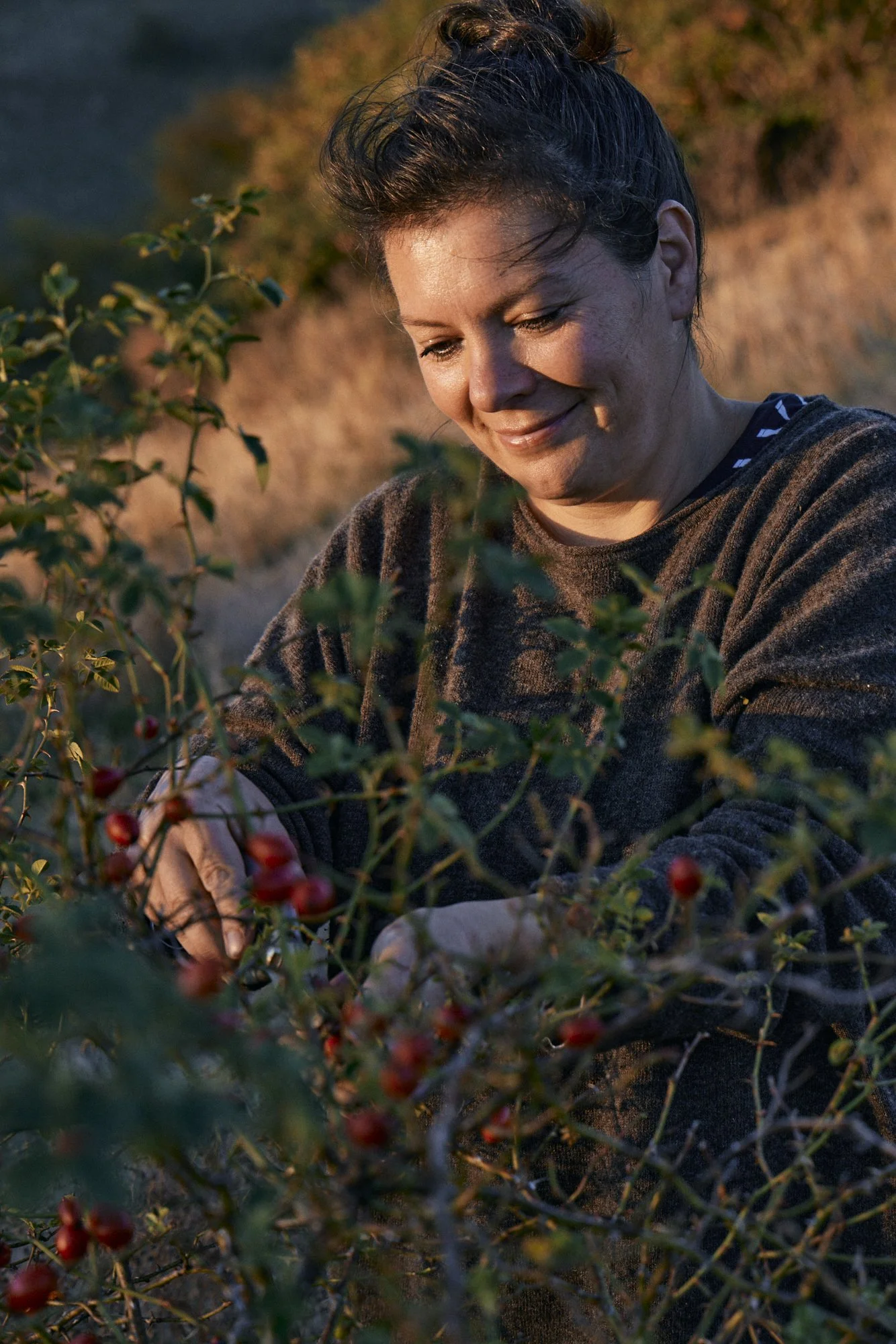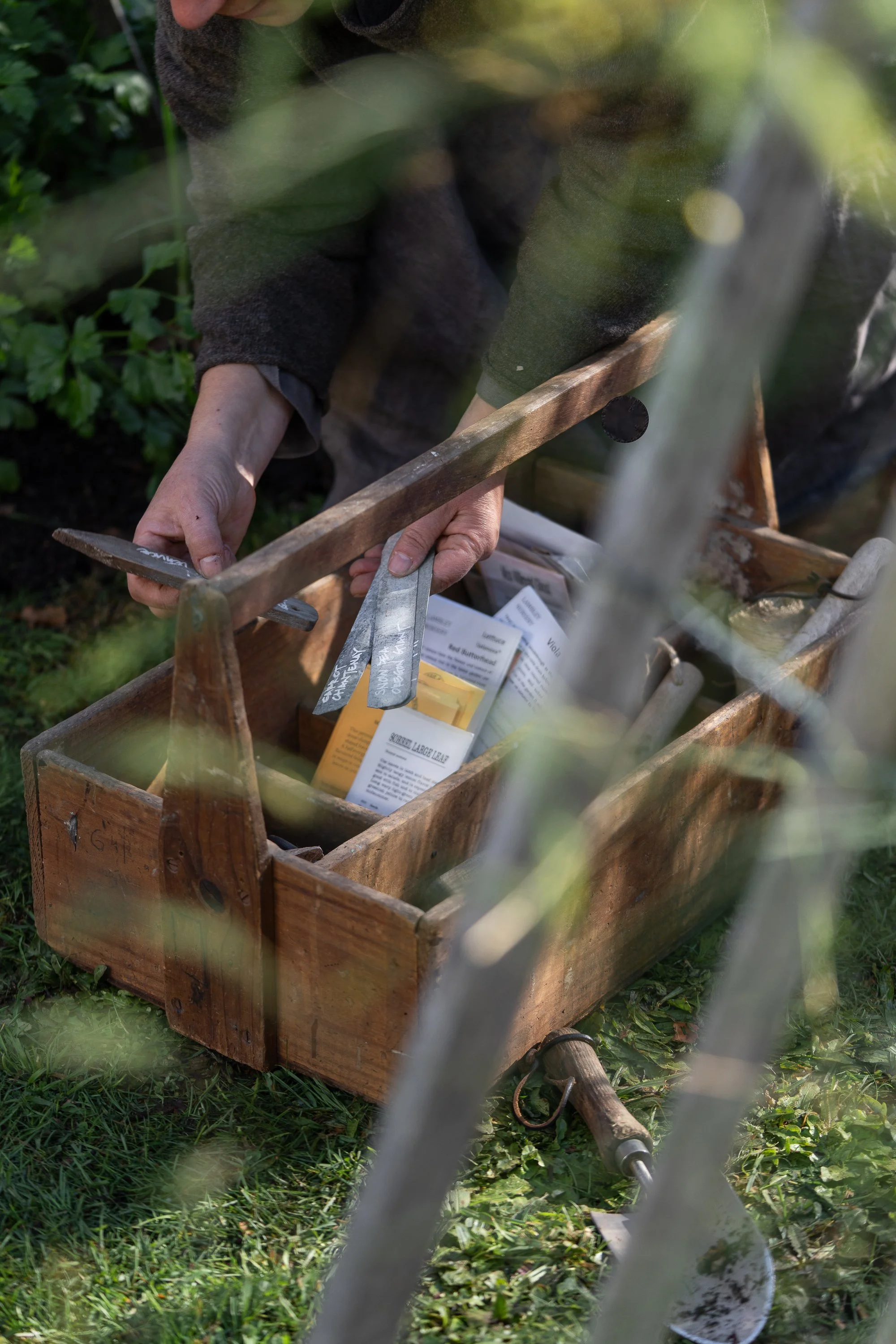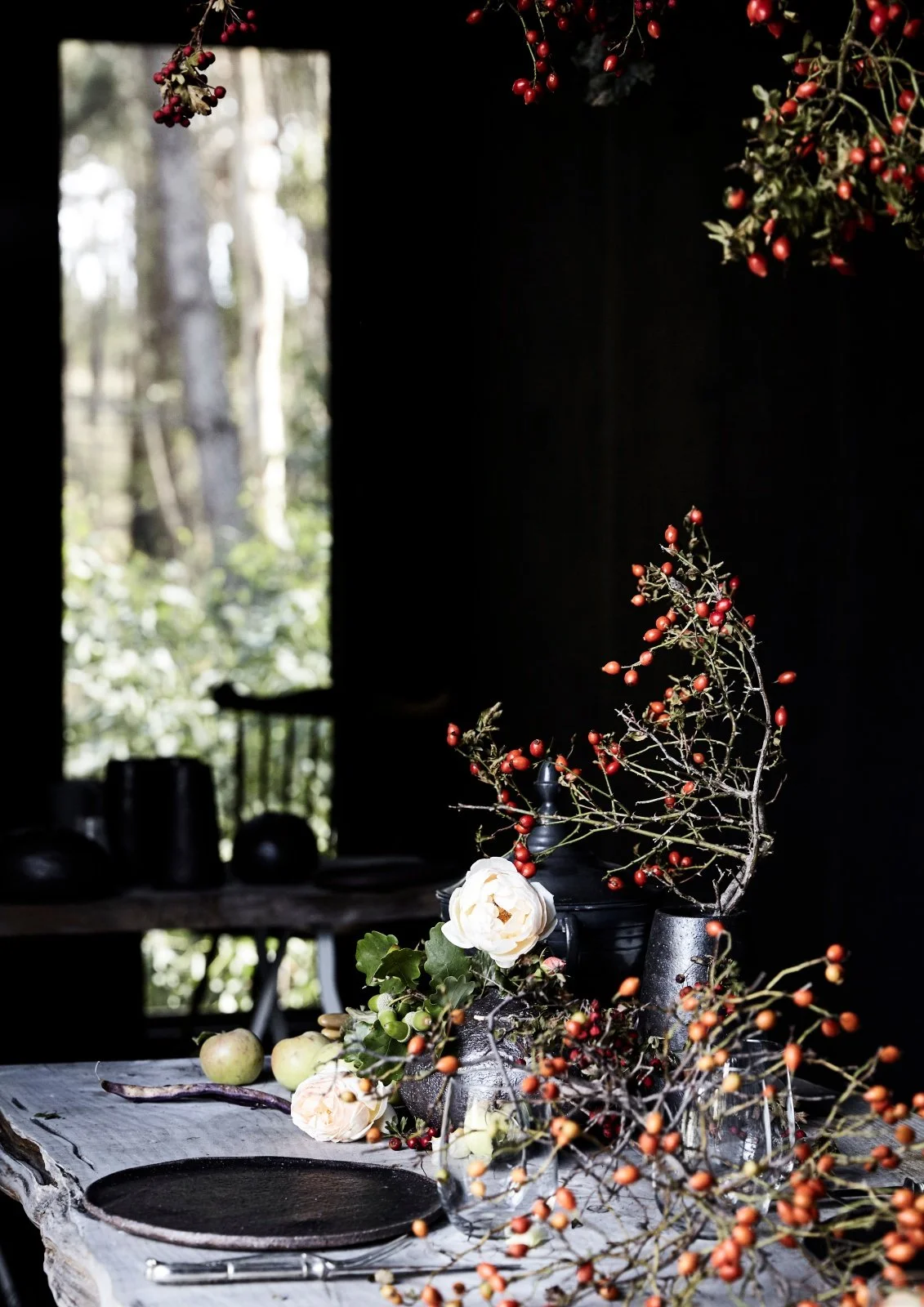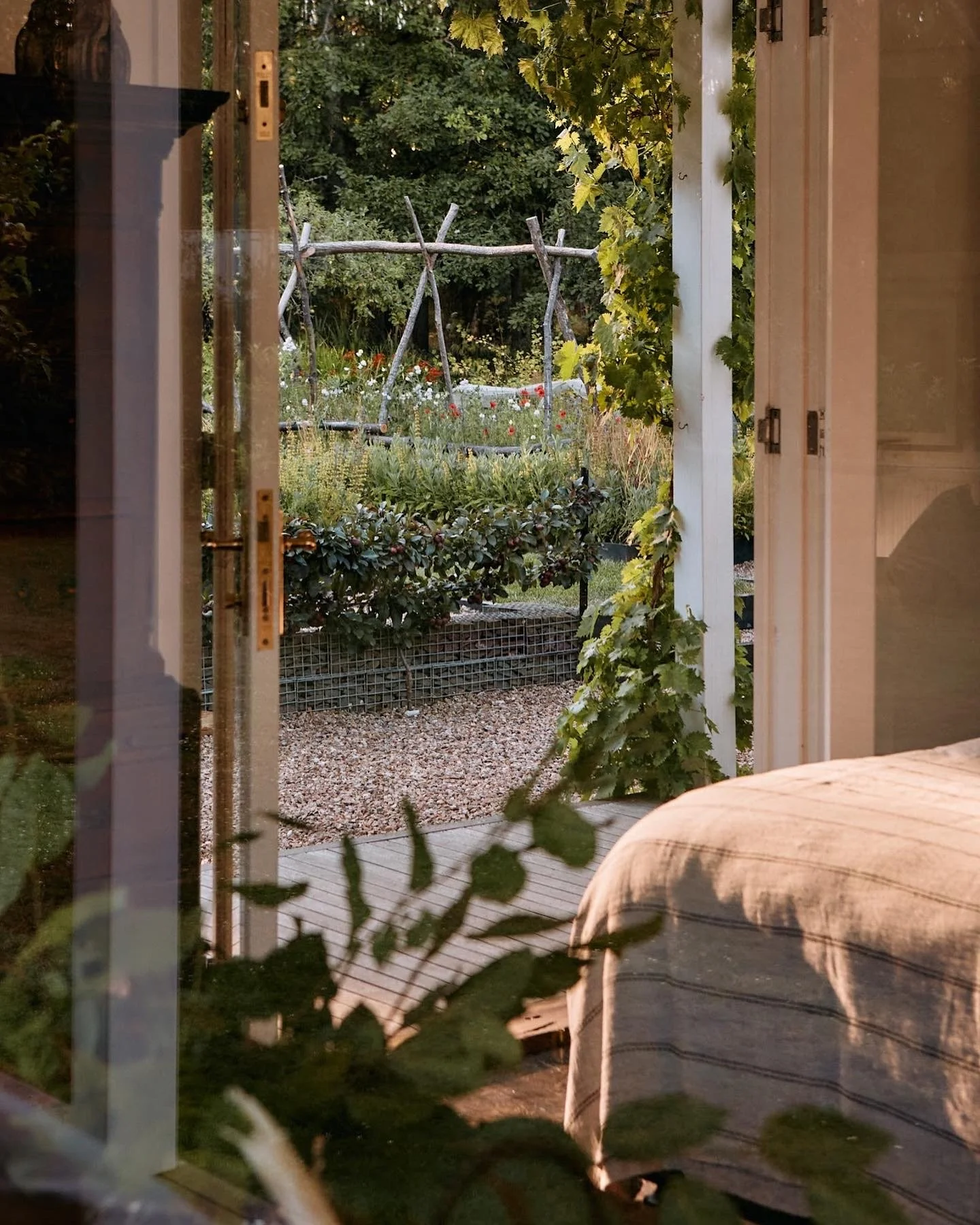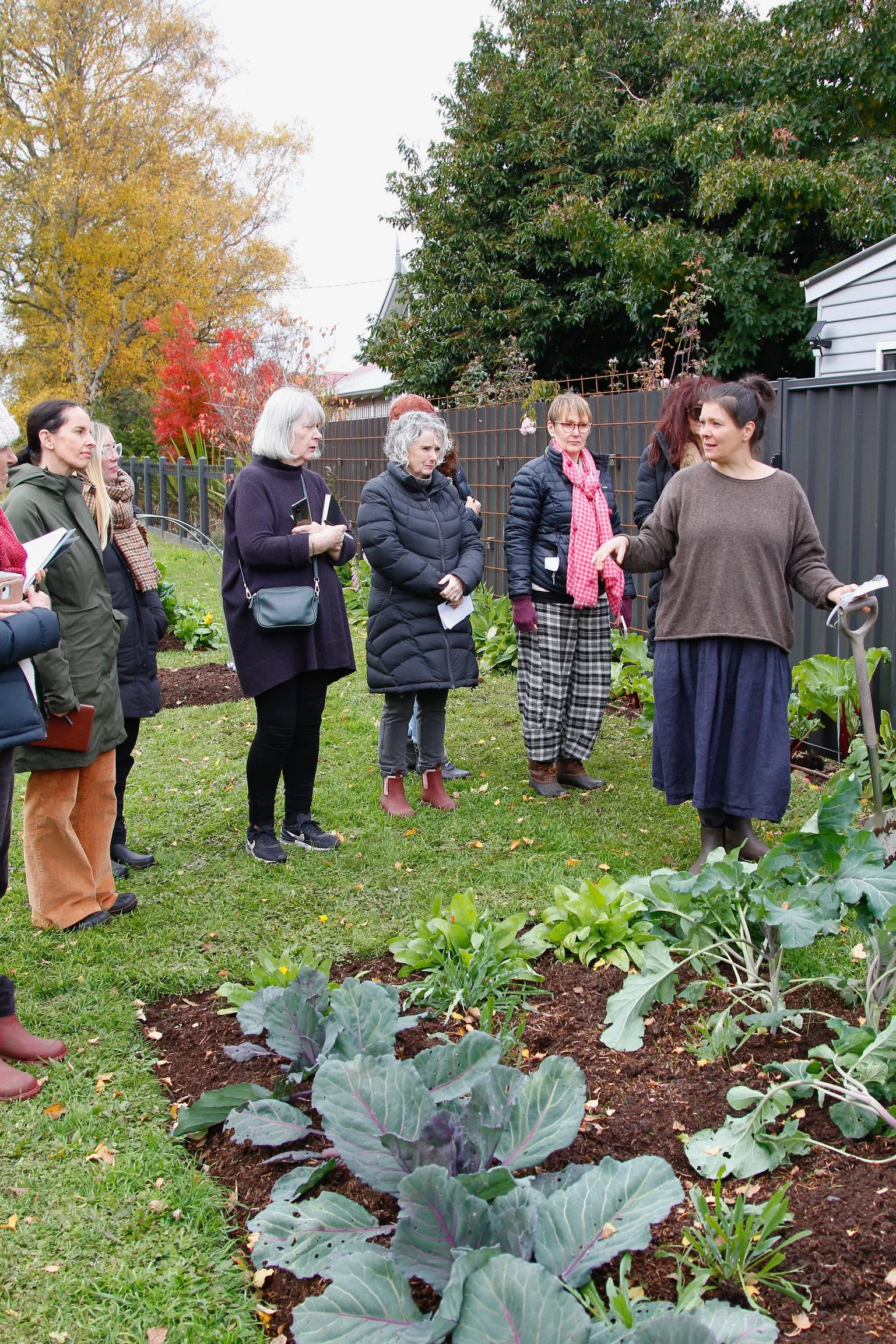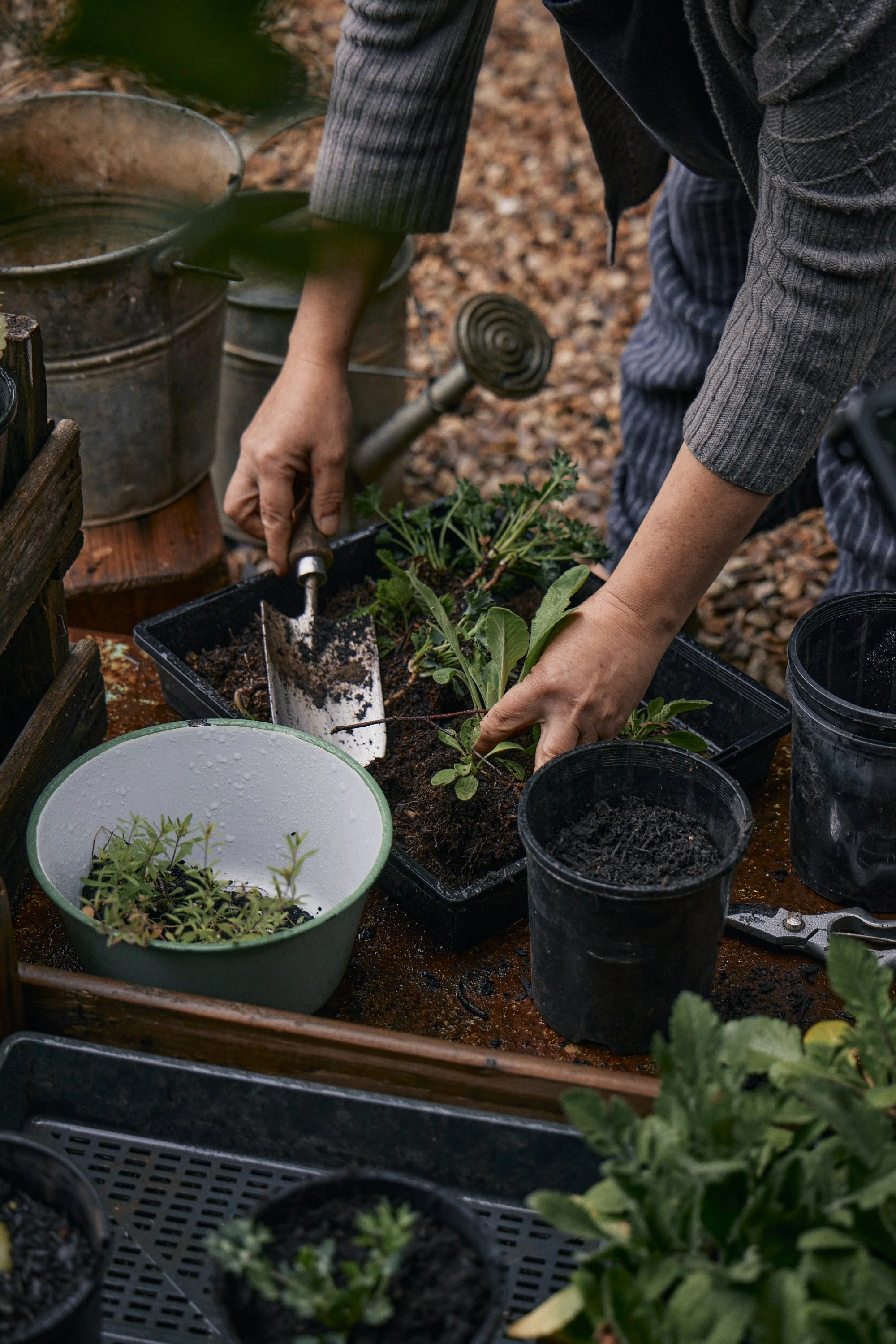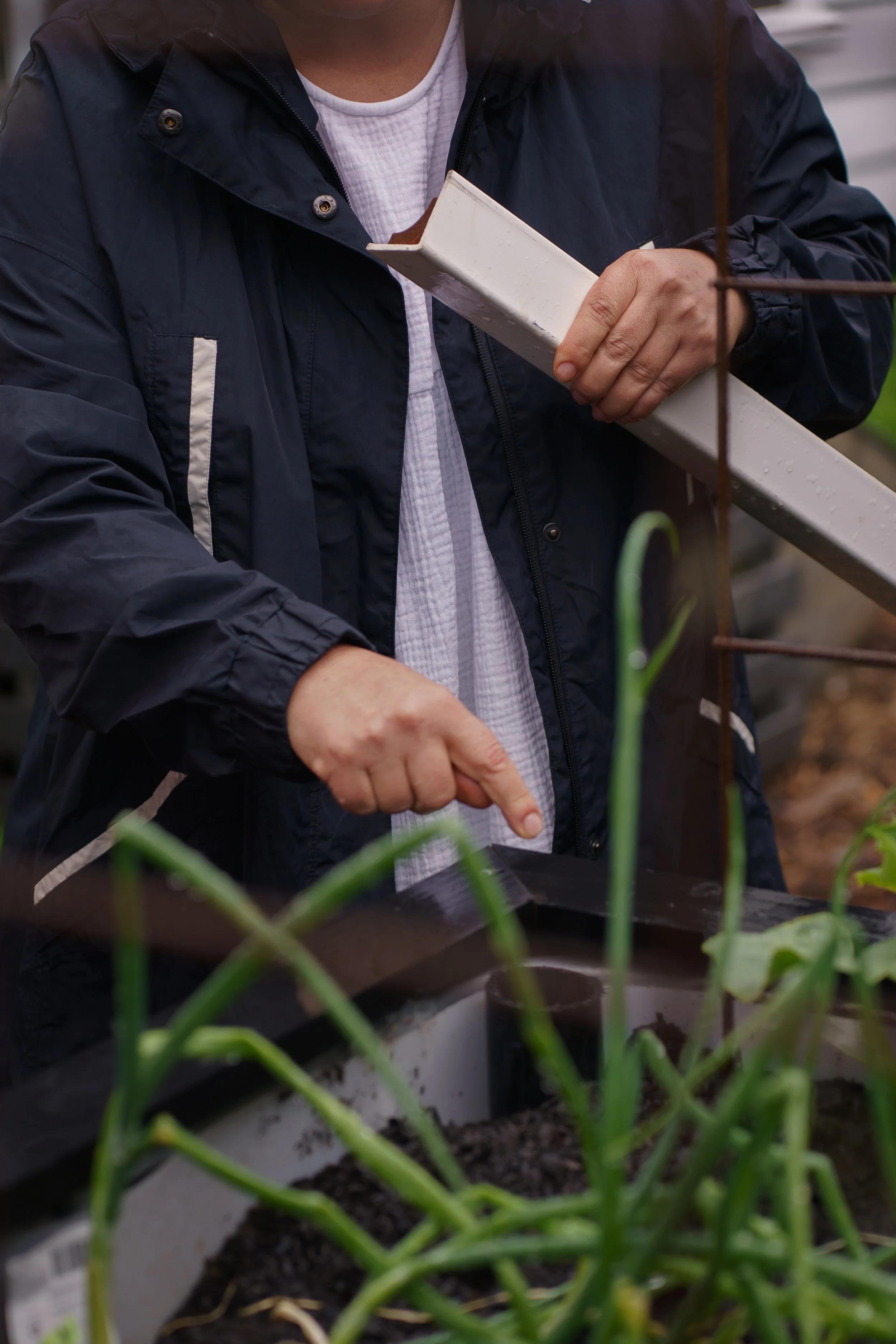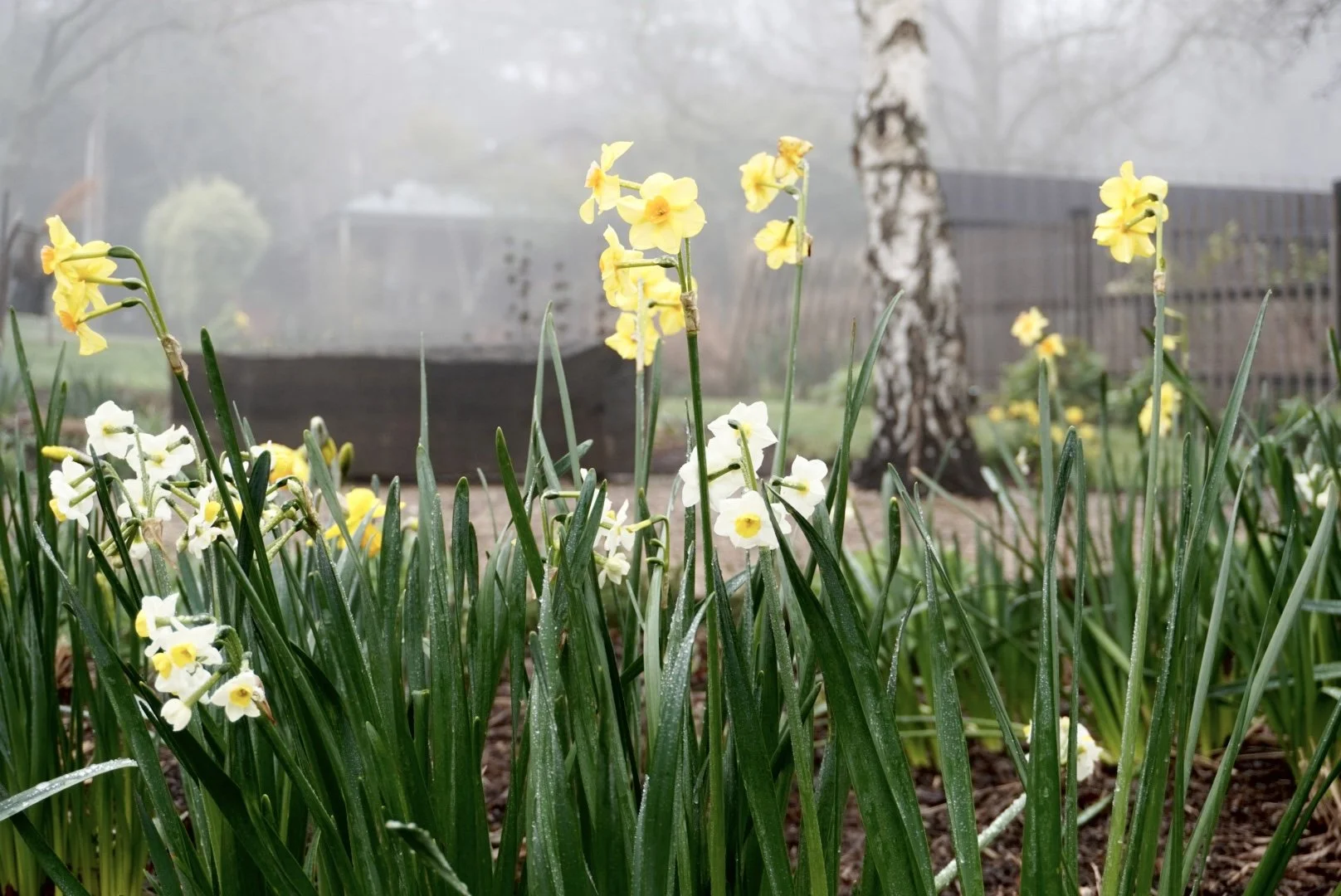I harvested the first Romanesco heads this week and had to stop and stare.
Those luminous chartreuse spirals feel like a little lesson in pattern and patience. I grow Romanesco because it is delicious, beautiful, and surprisingly resilient in a cool temperate garden like Daylesford.
What is romanesco
Romanesco is a brassica that sits between cauliflower and broccoli. It cooks like cauliflower, with a flavour that is slightly sweeter and nuttier. The texture is tender but holds shape beautifully, which makes it perfect for roasting and for dishes where you want structure on the plate.
Why I plant it
I like plants that serve more than one role. Romanesco offers food, sculptural presence, and a steady supply of leaves for the kitchen (and chooks!). The heads become seasonal markers in the bed, and when they finally appear it feels like the garden offering a small celebration.
How I grow romanesco in a cool temperate garden
Timing
Sow in late summer to early autumn for spring harvests. In cooler pockets, start seed in trays under cover, then transplant once seedlings are sturdy.
You can also sow in late winter for late spring to early summer heads if your season allows. Stagger a few sowings to spread the harvest.
Site and soil
Full sun and rich, living soil are non-negotiable. I prep beds with compost and a light sprinkle of a balanced, organic fertiliser, then mulch after transplanting.
Brassicas like consistent moisture. My wicking beds hold an even soil profile which helps prevent stress and buttoning. Water at the base rather than overhead to discourage disease.
Spacing
Give each plant room to develop a full head. I use 45 centimetres between plants and about 45 centimetres between rows. Good airflow is essential.
Protection and care
Cabbage white butterflies adore brassicas. I keep insect exclusion netting over young plants. If you are not netting, check daily and remove any green caterpillars by hand.
Feed little and often. I alternate seaweed and compost teas through the season and keep mulch topped up to regulate soil temperature.
Romanesco appreciates cool nights for head formation. If a sudden warm spell arrives, keep water consistent and shade the bed lightly in the afternoon if needed.
Rotation and companions
Rotate brassicas yearly to protect soil health and reduce disease.
Companion plant with dill, calendula, and sweet alyssum to support beneficial insects and soften the edge of the bed. I’ve planted this lots with spinach, lettuce and radicchio for a diverse and thriving polyculture
Harvest and storage
Pick when the head is tight, uniform, and firm. Use a sharp knife and keep a few leaves attached to protect the florets.
Store in the crisper wrapped loosely. Eat within a few days for best flavour.
Small-space tip
Romanesco is a statement plant. If you only have room for one, give it pride of place at the end of a bed or in a large wicking container and underplant with herbs or salad greens.
Kitchen notes and serving suggestions
Roasted romanesco with yoghurt tahini and pomegranate molasses
Break into florets. Toss with extra virgin olive oil, sea salt, and cracked pepper. Add a Middle Eastern spice profile such as cumin, coriander, or za’atar. Roast hot until caramelised at the edges. Finish with a yoghurt and tahini drizzle, a thread of pomegranate molasses, fresh herbs, and toasted nuts.
More ways to serve
Toss warm florets with anchovy, lemon zest, chilli, and breadcrumbs.
Steam until just tender, then dress with olive oil, lemon, and parsley for a simple side.
Cut into small florets for a quick tray bake with chickpeas and red onion.
Use the leaves as you would kale. Slice and sauté with garlic and a squeeze of lemon.
Cook’s tip
Do not overcook. Romanesco is at its best when the spirals stay intact and there is still a little bite.
Sustainability notes
I like to use the whole plant. The leaves are excellent, the core can be thinly sliced for stir-fries, and any trim goes to the chocks, compost or worm farm. If a plant wants to flower and you do not need seed, let it. The bees will thank you.
Troubleshooting at a glance
Tiny or loose heads: heat or stress. Keep water steady, mulch well, and plant for the cool end of your season.
Caterpillars: net early, hand-pick, and encourage beneficial insects with companion flowers.
Yellowing leaves: a sign of nutrient drawdown. Side-dress with compost and water in.
Continue your gardening journey with me
If you enjoy this kind of content, my workshops offer more detail and guidance on design, productivity and seasonal care.
If you are building your garden from home right now, my ebooks on Wicking Bed Gardens and Introduction to Backyard Chicken Keeping offer practical step by step guidance that pairs well with the workshops.
I share seasonal tips, behind the scenes at Little Cottage on a Hill, and new resources through my newsletter. Subscribe to receive my entire plant list from the garden as a personal thank you.
You may want to check out my related content below:
Rooted in Reflection, Growing with Intention – Explore the intentionality behind creating a garden that serves both purpose and beauty.
The Power of Noticing: How a Garden Wander Led Me to Morels – Explore the quiet magic of noticing the small wonders that grow in your garden.
If You Could Learn Anything From Me This Year, What Would It Be? – Discover what I’ve been reflecting on the workshops I’ve shared over the years—and dreaming into what might come next.
Stay connected for more seasonal inspiration:
Instagram | Facebook | Gardenstead | LinkedIn | Pinterest | YouTube | Website | Newsletter
Thanks so much for following along.
Natasha xx


